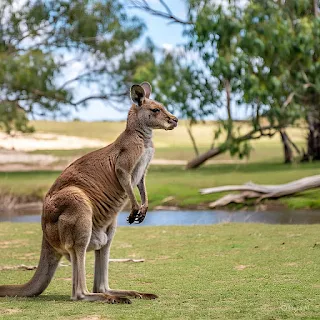Describe the structure body of Kangaroo with its classification
Kangaroo Structure and Classification
Classification
- Kingdom: Animalia
- Phylum: Chordata
- Class: Mammalia
- Order: Diprotodontia
- Family: Macropodidae
- Genus: Macropus (and other genera)
- Species: Various species, such as Macropus giganteus (Eastern Grey Kangaroo) and Macropus rufus (Red Kangaroo)
Body Structure
- *Body Size and Shape*: Kangaroos are large marsupials with a distinctive body shape, featuring a robust torso, strong hind legs, and a long, muscular tail.
- *Hind Legs*: Powerful and adapted for jumping, with large feet and sharp claws.
- *Front Legs*: Shorter and more delicate, used for grasping and manipulating food.
- *Tail*: Long and muscular, used for balance and support.
- *Fur*: Thick and woolly, varying in color depending on the species.
- *Pouch*: A characteristic feature of female kangaroos, used to carry and nurse their young.
Unique Features
- *Hopping Locomotion*: Kangaroos are famous for their unique hopping gait, which allows them to cover great distances at high speeds.
- *Strong Jumping Ability*: Kangaroos can jump long distances and reach high speeds, thanks to their powerful hind legs and specialized foot structure.
- *Specialized Digestive System*: Kangaroos have a complex digestive system that allows them to break down and extract nutrients from plant material.
Overall, kangaroos are fascinating and highly adapted animals, well-suited to their native Australian environment.


No comments:
Post a Comment